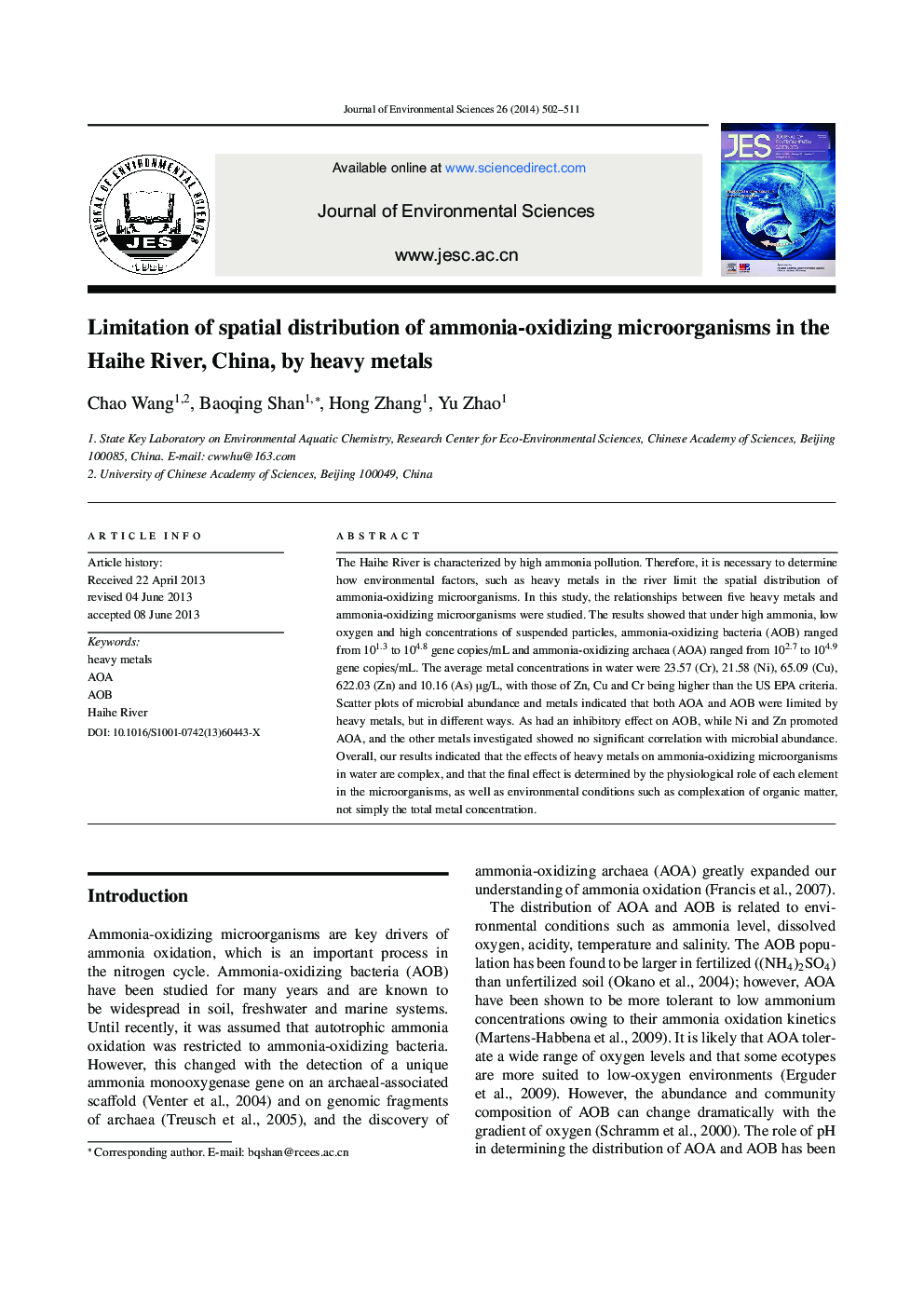| Article ID | Journal | Published Year | Pages | File Type |
|---|---|---|---|---|
| 4454285 | Journal of Environmental Sciences | 2014 | 10 Pages |
The Haihe River is characterized by high ammonia pollution. Therefore, it is necessary to determine how environmental factors, such as heavy metals in the river limit the spatial distribution of ammonia-oxidizing microorganisms. In this study, the relationships between five heavy metals and ammonia-oxidizing microorganisms were studied. The results showed that under high ammonia, low oxygen and high concentrations of suspended particles, ammonia-oxidizing bacteria (AOB) ranged from 101.3 to 104.8 gene copies/mL and ammonia-oxidizing archaea (AOA) ranged from 102.7 to 104.9 gene copies/mL. The average metal concentrations in water were 23.57 (Cr), 21.58 (Ni), 65.09 (Cu), 622.03 (Zn) and 10.16 (As) μg/L, with those of Zn, Cu and Cr being higher than the US EPA criteria. Scatter plots of microbial abundance and metals indicated that both AOA and AOB were limited by heavy metals, but in different ways. As had an inhibitory effect on AOB, while Ni and Zn promoted AOA, and the other metals investigated showed no significant correlation with microbial abundance. Overall, our results indicated that the effects of heavy metals on ammonia-oxidizing microorganisms in water are complex, and that the final effect is determined by the physiological role of each element in the microorganisms, as well as environmental conditions such as complexation of organic matter, not simply the total metal concentration.
